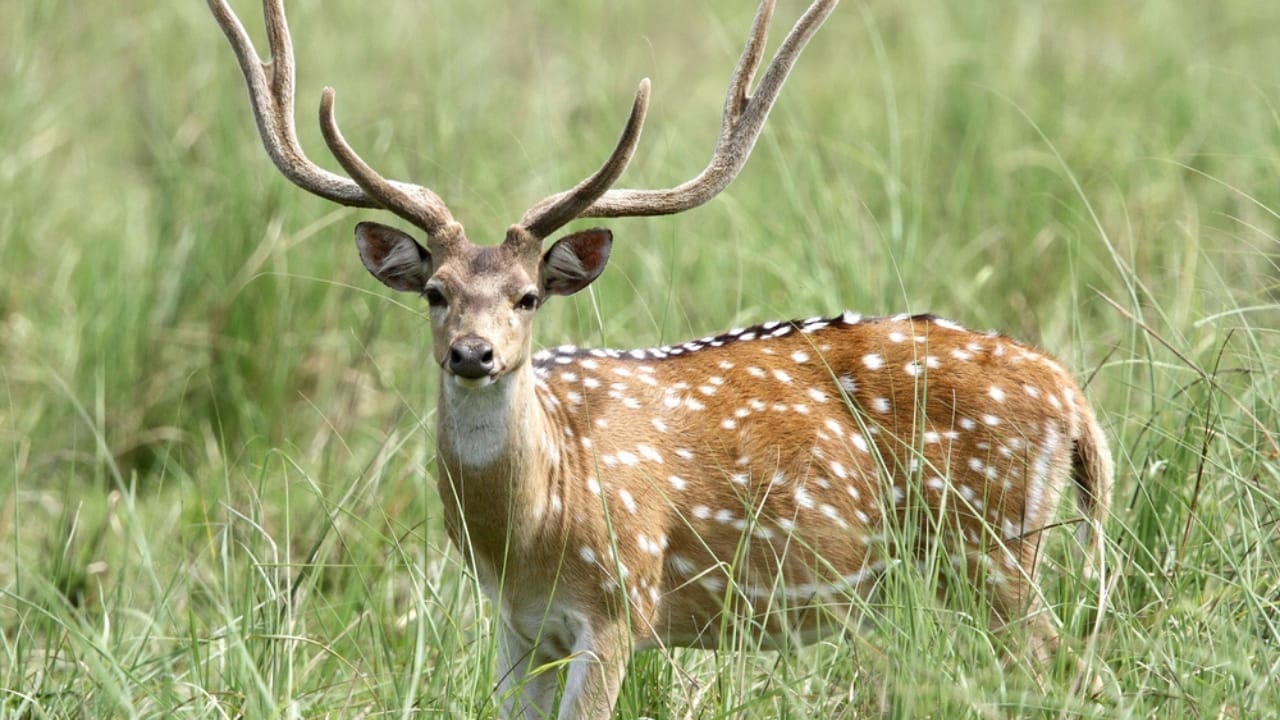They may be beautiful, but don’t let their appearance fool you. Axis deer, an exotic species native to India and Nepal, have found their way into the United States and are rapidly spreading across the country. These spotted invaders pose a serious threat to native wildlife and ecosystems, competing for resources and reproducing at an alarming rate.
As their populations continue to grow, experts warn of the potential consequences of introducing non-native species into new environments. The truth is that managing an invasive species is challenging, and something needs to be done to protect native habitats from their impact.
The Arrival of Axis Deer in America

Axis deer were first introduced to the United States in the 1930s as a game animal for hunters.(ref)
Private ranches and controlled hunting sites imported these deer for their meat and unique appearance. However, over time, some axis deer managed to escape captivity and establish free-ranging populations in states like Texas, Hawaii, and California.
The Threat of an Invasive Species

As an invasive species, axis deer compete with native wildlife for resources and can cause significant damage to the environment. They have a highly flexible diet, allowing them to forage on a wider variety of plants compared to native deer species.
During droughts or times of scarcity, this gives axis deer a competitive advantage over white-tailed deer and other herbivores.
Furthermore, axis deer reproduce year-round, unlike the seasonal breeding cycles of native deer. This allows their populations to grow rapidly, putting even more pressure on the ecosystem. In Hawaii, axis deer populations are increasing at an alarming rate of 20-30% per year, causing destruction to agriculture and natural habitats.(ref)
The Challenges of Management

Controlling the spread of axis deer has proven difficult. Hunting is one method used to manage populations but requires proper permits and monitoring to ensure effectiveness. In some cases, such as the recent escape of axis deer into the Big Thicket Natural Preserve in Texas, authorities have allowed hunters to take axis deer without special tags or fees in an attempt to quickly remove them from the area.
However, the complete eradication of established axis deer populations is challenging. In Hawaii, a dedicated team using advanced technology like infrared radar and helicopter surveys worked for over two years to successfully remove all axis deer from the Big Island.
Ongoing monitoring is crucial to prevent any future invasions.
The Future of Axis Deer in America

As the exotic animal trade continues to thrive in the United States, experts warn that incidents of non-native species escaping and establishing wild populations will continue. The axis deer serves as a caution of the potential consequences of introducing foreign species into new environments.
It is crucial for authorities, conservationists, and the public to work together in monitoring and managing invasive species like the axis deer. Through early detection, rapid response, and ongoing research, we can strive to protect our native ecosystems and wildlife from the detrimental impacts of these beautiful but dangerous invaders.
Davin is a jack-of-all-trades but has professional training and experience in various home and garden subjects. He leans on other experts when needed and edits and fact-checks all articles.

